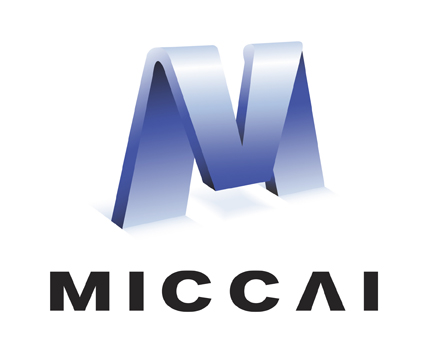Abstract
Pancreatic cancer is one of the global leading causes of cancer-related deaths. Despite the success of Deep Learning in computer-aided diagnosis and detection (CAD) methods, little attention has been paid to the detection of Pancreatic Cancer. We propose a method for detecting pancreatic tumor that utilizes clinically-relevant features in the surrounding anatomical structures, thereby better aiming to exploit the radiologist’s knowledge compared to other, conventional deep learning approaches. To this end, we collect a new dataset consisting of 99 cases with pancreatic ductal adenocarcinoma (PDAC) and 97 control cases without any pancreatic tumor. Due to the growth pattern of pancreatic cancer, the tumor may not be always visible as a hypodense lesion, therefore experts refer to the visibility of secondary external features that may indicate the presence of the tumor. We propose a method based on a U-Net-like Deep CNN that exploits the following external secondary features: the pancreatic duct, common bile duct and the pancreas, along with a processed CT scan. Using these features, the model segments the pancreatic tumor if it is present. This segmentation for classification and localization approach achieves a performance of 99% sensitivity (one case missed) and 99% specificity, which realizes a 5% increase in sensitivity over the previous state-of-the-art method. The model additionally provides location information with reasonable accuracy and a shorter inference time compared to previous PDAC detection methods. These results offer a significant performance improvement and highlight the importance of incorporating the knowledge of the clinical expert when developing novel CAD methods.
Access this chapter
Tax calculation will be finalised at checkout
Purchases are for personal use only
Similar content being viewed by others
Notes
- 1.
Newly annotated data: https://github.com/cviviers/3D_UNetSecondaryFeatures.
- 2.
Commercially available from Nvidia Corp., CA, USA.
References
Ahn, S.S., et al.: Indicative findings of pancreatic cancer in prediagnostic CT. Eur. Radiol. 19(10), 2448–2455 (2009)
Alves, N., Schuurmans, M., Litjens, G., Bosma, J.S., Hermans, J., Huisman, H.: Fully automatic deep learning framework for pancreatic ductal adenocarcinoma detection on computed tomography. Cancers 14(2), 376 (2022)
Çiçek, Ö., Abdulkadir, A., Lienkamp, S.S., Brox, T., Ronneberger, O.: 3D U-Net: learning dense volumetric segmentation from sparse annotation. In: Ourselin, S., Joskowicz, L., Sabuncu, M.R., Unal, G., Wells, W. (eds.) MICCAI 2016. LNCS, vol. 9901, pp. 424–432. Springer, Cham (2016). https://doi.org/10.1007/978-3-319-46723-8_49
Hidalgo, M.: Pancreatic cancer. N. Engl. J. Med. 362(17), 1605–1617 (2010)
Isensee, F., Jaeger, P.F., Kohl, S.A.A., Petersen, J., Maier-Hein, K.H.: NNU-Net: a self-configuring method for deep learning-based biomedical image segmentation. Nat. Methods 18(2), 203–211 (2021)
Kriegsmann, M., et al.: Deep learning in pancreatic tissue: identification of anatomical structures, pancreatic intraepithelial neoplasia, and ductal adenocarcinoma. Int. J. Mol. Sci. 22(10), 5385 (2021)
Lee, E.S., Lee, J.M.: Imaging diagnosis of pancreatic cancer: a state-of-the-art review. World J. Gastroenterol. 20(24), 7864–7877 (2014)
Liu, K.L., et al.: Deep learning to distinguish pancreatic cancer tissue from non-cancerous pancreatic tissue: a retrospective study with cross-racial external validation. Lancet Digital Health 2(6), e303–e313 (2020)
Petch, J., Di, S., Nelson, W.: Opening the black box: the promise and limitations of explainable machine learning in cardiology. Can. J. Cardiol. 38(2), 204–213 (2022)
Rahib, L., et al.: Projecting cancer incidence and deaths to 2030: the unexpected burden of thyroid, liver, and pancreas cancers in the united states. Cancer Res. 74(11), 2913–2921 (2014)
Si, K., et al.: Fully end-to-end deep-learning-based diagnosis of pancreatic tumors. Theranostics 11(4), 1982–1990 (2021)
Simpson, A.L., et al.: A large annotated medical image dataset for the development and evaluation of segmentation algorithms (2019)
Treadwell, J.R., et al.: Imaging tests for the diagnosis and staging of pancreatic adenocarcinoma: a meta-analysis. Pancreas 45(6), 789–795 (2016)
Wolny, A., et al.: Accurate and versatile 3d segmentation of plant tissues at cellular resolution. eLife. 9, e57613 (2020)
Zhang, L., Sanagapalli, S., Stoita, A.: Challenges in diagnosis of pancreatic cancer. World J. Gastroenterol. 24(19), 2047–2060 (2018)
Zhu, Z., Xia, Y., Xie, L., Fishman, E.K., Yuille, A.L.: Multi-scale coarse-to-fine segmentation for screening pancreatic ductal adenocarcinoma. In: Shen, D., et al. (eds.) MICCAI 2019. LNCS, vol. 11769, pp. 3–12. Springer, Cham (2019). https://doi.org/10.1007/978-3-030-32226-7_1
Author information
Authors and Affiliations
Corresponding author
Editor information
Editors and Affiliations
Rights and permissions
Copyright information
© 2022 The Author(s), under exclusive license to Springer Nature Switzerland AG
About this paper
Cite this paper
Viviers, C.G.A. et al. (2022). Improved Pancreatic Tumor Detection by Utilizing Clinically-Relevant Secondary Features. In: Ali, S., van der Sommen, F., Papież, B.W., van Eijnatten, M., Jin, Y., Kolenbrander, I. (eds) Cancer Prevention Through Early Detection. CaPTion 2022. Lecture Notes in Computer Science, vol 13581. Springer, Cham. https://doi.org/10.1007/978-3-031-17979-2_14
Download citation
DOI: https://doi.org/10.1007/978-3-031-17979-2_14
Published:
Publisher Name: Springer, Cham
Print ISBN: 978-3-031-17978-5
Online ISBN: 978-3-031-17979-2
eBook Packages: Computer ScienceComputer Science (R0)


